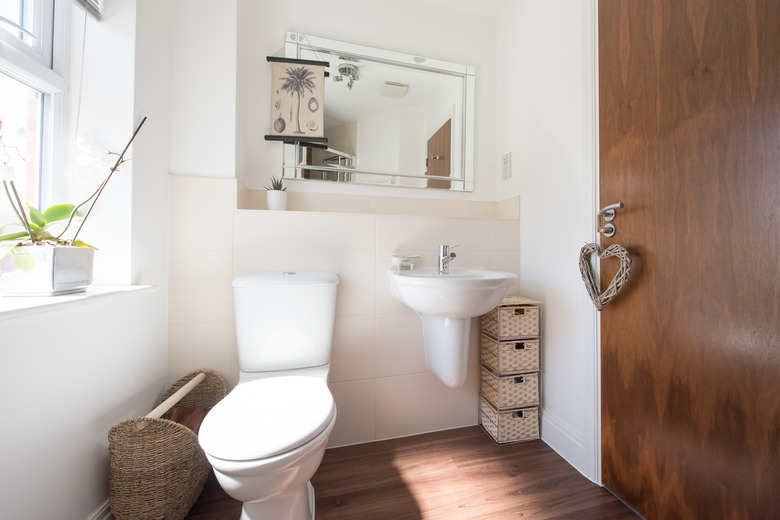DIY Power Flush Conversion
A power flush toilet is an innovation in flushing systems. Power flushing uses water and air that comes from a bladder installed in the toilet tank. The system's technology is basic. The bladder compresses a small amount of air inside it after each flush and uses the air to push the water under pressure through the toilet. The bladder fits inside the tank and connects to the existing toilet fittings, converting the toilet to a power flush toilet .
Why Power Flush?
Why Power Flush?
Power flush toilets, also called pressure assisted toilets, typically outperform other types of toilets, according to the Family Handyman. And with water kept inside a pressure tank, rather than a porcelain tank, condensation won't occur on the outside.
These toilets are a bit more expensive, and they do create a loud flush. You can see them in many offices and businesses. If you lift the lid and see a pressure tank, it's a power flush toilet.
Starting the Installation
Starting the Installation
Turn off the water to the toilet tank. Using a 1/2-inch, open-end wrench, unscrew the nut that holds the water supply line to the bottom of the toilet. Remove the toilet tank's lid, and remove everything from inside the toilet tank. Use your fingers to unscrew the plastic nuts and fittings to remove the flushing device and the flapper at the bottom of the toilet tank's interior. Remove the arm coming from the side of the toilet that pulls the flapper open.
Remove the bladder from a power flush conversion kit. Take out a long cylinder from the bladder. It should unscrew and lift straight up from the center of the bladder. Set it aside.
Hold the bladder over the toilet tank. A small water line will hang from the bladder. Insert the threaded end of the bladder's water line down and through the hole where the toilet's water supply line connects to the toilet's bottom. Lower the bladder into the toilet. A large hole is in the bottom of the bladder, and the hole should fit perfectly over the large hole in the bottom of the toilet.
Finishing the Job
Finishing the Job
Insert the long cylinder back into the bladder. Using your fingers, screw the long cylinder counterclockwise until it clicks and won't screw any farther. Two divots, or indentations, are on the long cylinder's top along its outside perimeter. Insert the two ends of a pair of pliers into the divots. Turn the pliers clockwise to tighten the cylinder, making the bladder secure in the tank.
Remove the arm from the power flush conversion kit. Attach one end of the arm to the toilet flush valve on the inside of the toilet tank by using the small pin on the arm's end. Attach the arm's other end to the cylinder's top by lifting the small, spring-loaded metal arm that is on the cylinder's top and inserting the first arm under that spring-loaded arm.
Screw the water supply line to the toilet tank's bottom exterior to make it just as it was before you removed it earlier. Put the lid back on the toilet tank. Flush the toilet.
